Your roof does a lot more than just keep the rain out. Shingles or metal panels are only the surface layer and, on their own, don’t provide complete protection. That’s why almost every roof today is covered with a special water-resistant layer called underlayment (available in different forms). While the average homeowner may not recognize the specific types of these membranes, it’s worth understanding the key differences between standard underlayment (felt) and ice and water shield. Knowing them could save you from leaks, ice dams, and costly repairs.
What Is Underlayment?
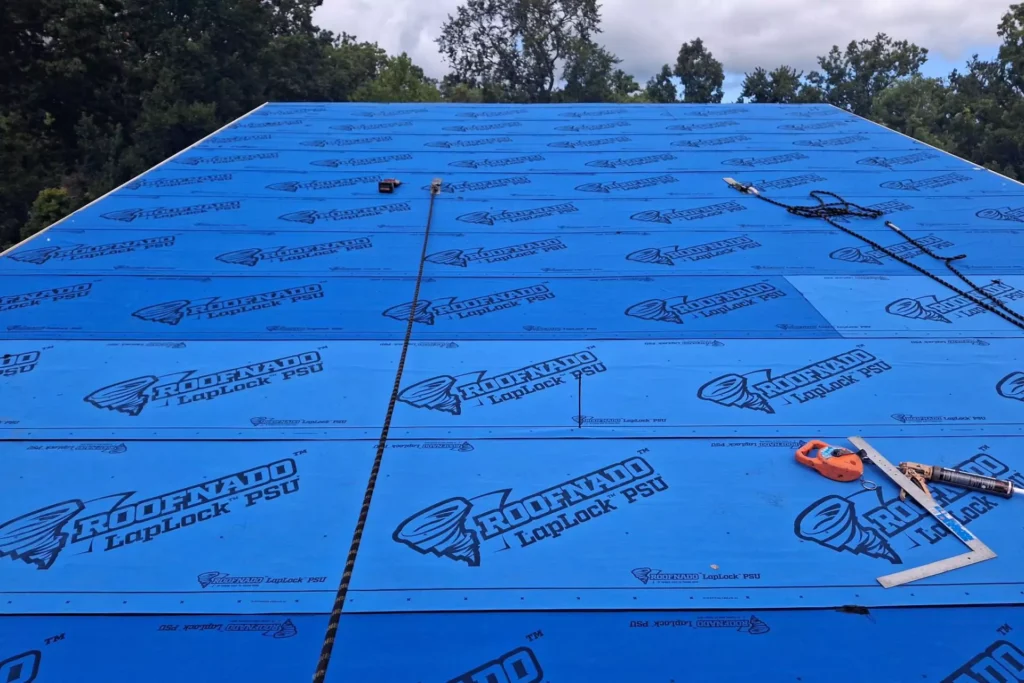
Underlayment is a water-resistant or waterproof membrane installed directly on the roof sheathing, beneath the roofing material such as asphalt shingles, standing-seam metal panels, or composite shakes. Its main role is to act as a secondary layer of protection in case the shingles fail, while also helping to manage moisture in the roof structure.
The latest version of the IBC requires underlayment, unless the roof is covered with structural metal panels.
What Type of Underlayment is Used?
If you’re planning a roof replacement, you’ve probably heard about the different types of underlayment. Some roofers in Illinois still use asphalt felt, while many contractors prefer modern synthetic materials. It may sound complicated, but in reality, the choice is simple: if your budget allows, always go with synthetic rather than asphalt felt. It offers better tear resistance, longer lifespan, and superior waterproofing.
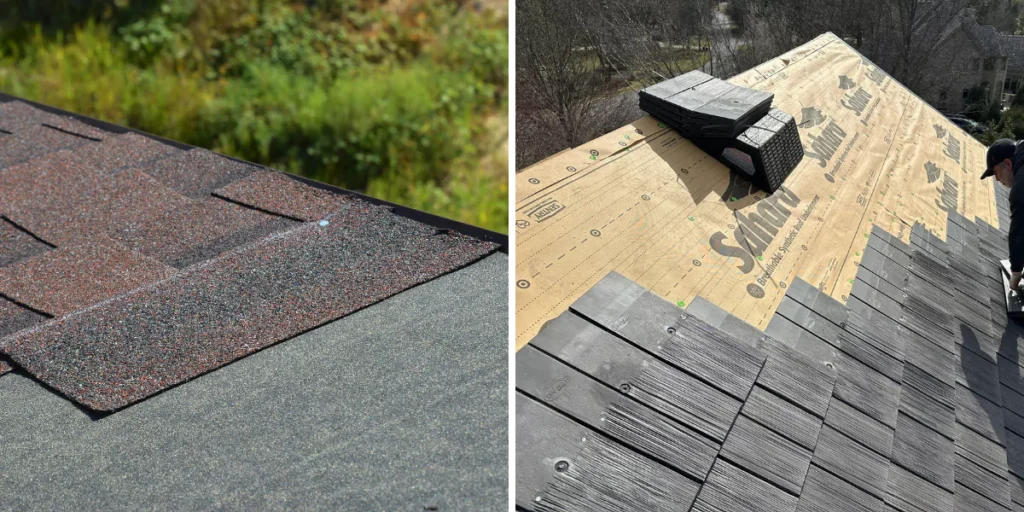
But here’s the catch: underlayment isn’t fully waterproof — and it’s not designed to be. If water pools or ice builds up (for example, in the form of ice dams), it can still seep through. And as you know, water quickly damages the wooden components of the roof. That’s why roofers add an extra layer of protection in vulnerable areas — the so-called ice and water shield (or ice barrier).
What Is an Ice and Water Shield?
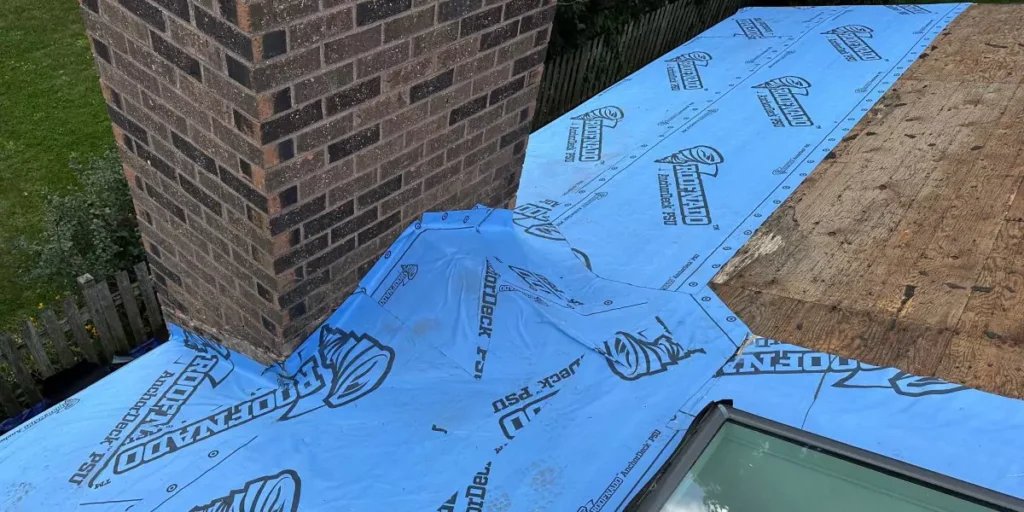
An ice and water shield — often called an ice barrier — is a heavy-duty protective layer designed for the areas of your roof most vulnerable to leaks. These “stress points” are typically found along roof edges, around skylights, and near chimneys.
In most cases, this material is thick, sticky, and completely waterproof. Thanks to its self-adhesive backing, it can be installed without roofing nails. When properly applied, an ice and water shield:
- blocks standing water from seeping through,
- seals small dents and nail penetrations,
- adds an extra layer of insulation, helping to prevent ice dams from forming.
Because of these properties, an ice and water shield can cost up to five times more than standard underlayment. Price alone, however, isn’t the only reason why the entire roof shouldn’t be covered with this type of membrane.
Key Differences Between Underlayment and Ice and Water Shield
Although both materials protect the roof, they serve different roles and offer different levels of effectiveness. Rather than competing, underlayment and ice barriers complement each other as part of a complete roofing system.
Scope of Application
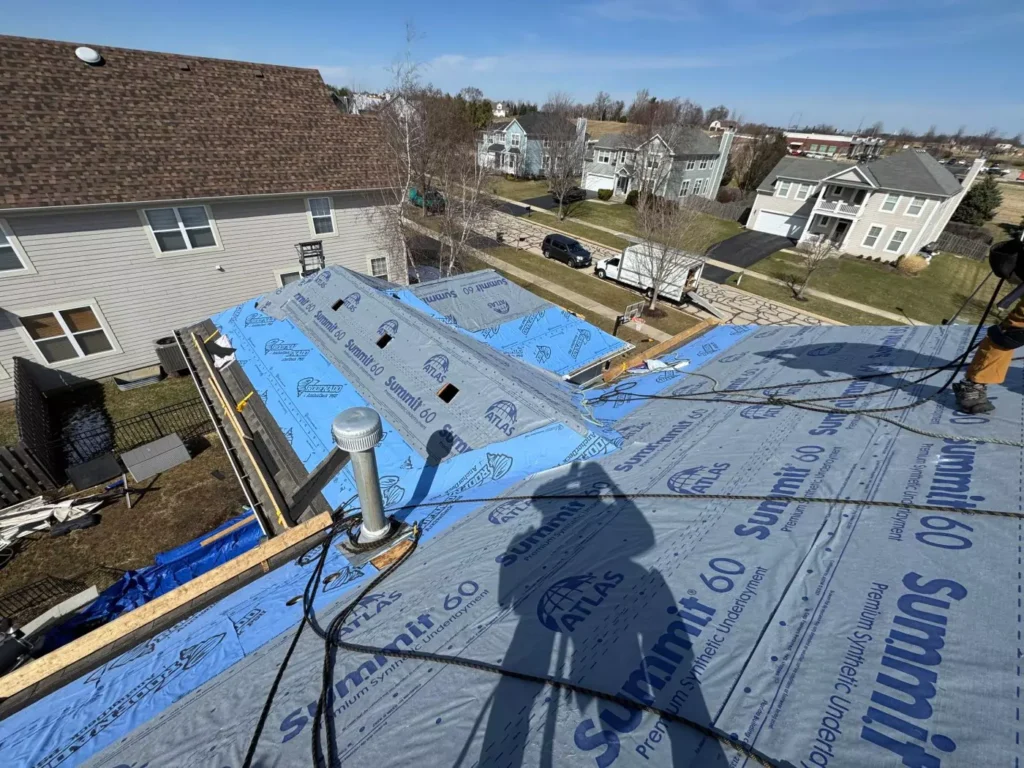
As mentioned earlier, ice and water shield is applied only in vulnerable areas — the stress points — such as roof edges (typically up to 4 feet from the eave), around chimneys, or near skylights. Underlayment, on the other hand, is installed across the entire roof surface, and in some areas, the two membranes may overlap.
The application rules can differ for low-slope roofs. In those cases, it may be necessary to cover 100% of the roof area with an ice and water shield. Fortunately, local building codes rarely include unusual requirements, and in virtually every state, ice and water shields are legally required.
Level of Protection
No roofing underlayment provides absolute protection against water or ice. While these membranes can resist moisture for a time, prolonged exposure to standing water will eventually cause them to fail — regardless of the price or manufacturer.
In contrast, a properly installed ice and water shield is completely watertight, even when penetrated by nails used to fasten shingles. That’s why the absence of a self-adhering membrane in critical areas is one of the most common causes of roof leaks, especially in older homes.
Materials and Construction
Underlayment comes in several types, ranging from traditional asphalt felt to modern synthetic membranes. Ice and water shields, by contrast, are always thicker, bituminous, self-adhesive sheets. When heated, they soften and seal even tiny surface imperfections. This difference in material impacts both durability and performance: underlayment “breathes,” while ice barriers block water completely.
However, without proper attic ventilation, a roof covered with bituminous ice and water shield can be prone to mold growth, since water vapor may accumulate instead of escaping outside.
Cost and Value
Underlayment is less expensive and covers the entire roof, so its unit cost is a major factor. Ice and water shields cost up to five times more, but since they’re applied only in select areas, the total investment remains manageable — typically no more than 80% of the full underlayment cost. In practice, an ice barrier often prevents far more expensive repairs caused by roof or interior water damage.
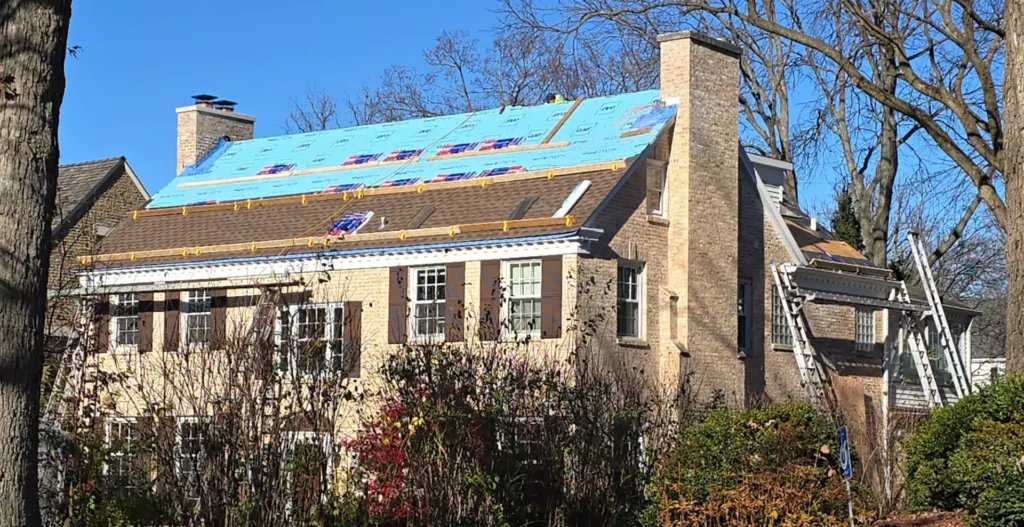
To put this in perspective, underlayment for a relatively simple 3,800-sq-ft hip roof may cost around $400, while adding an ice and water protection layer could add about $1,000. For a 4,800-sq-ft gable roof, the cost of an ice barrier generally should not exceed $600.
Why Use Both?
Underlayment and ice barriers aren’t competitors — they work together. Underlayment protects the entire roof from everyday rain and wind, while ice barriers reinforce the most leak-prone areas. Combined, they create a comprehensive protection system.
If shingles are damaged and moisture makes it past the underlayment, the ice barrier serves as a backup in critical zones. That extra layer can mean the difference between a minor repair and expensive water damage.
Even if you were willing to pay to cover the entire roof with an ice and water shield, it wouldn’t be a wise choice. A fully self-adhesive membrane acts as a vapor barrier, which can interfere with the proper transfer of humidity from the attic. Some argue that adding more vents solves the issue, but in reality it often leads to mold growth in the attic.
What About Ice Dams? Does Ice and Water Shield Protect The Roof Against Them?
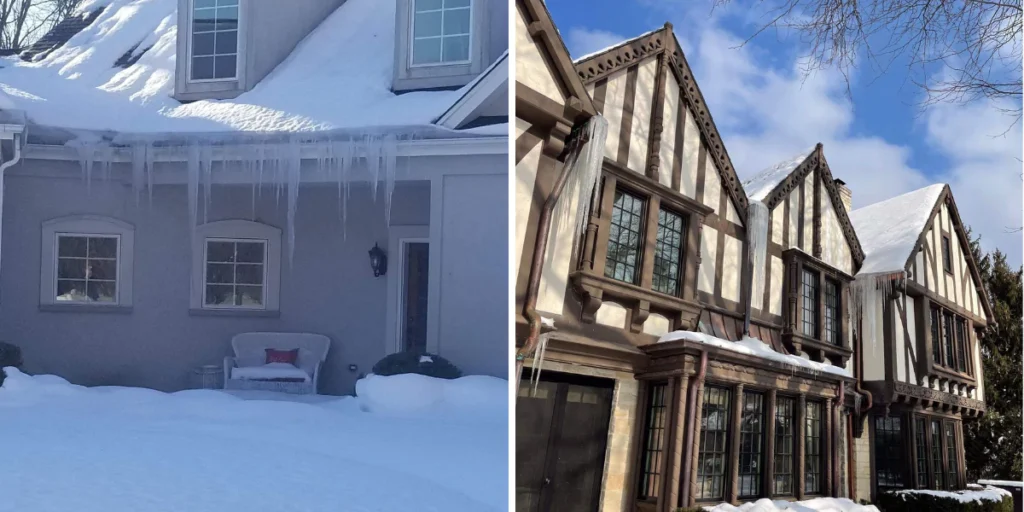
Ice dams form when heat escapes from inside the home, melting the snow on the roof. As the water flows down to the colder eaves, it refreezes and creates a ridge of ice. This ridge blocks new meltwater from draining, forcing it back beneath the shingles and into the structure.
Underlayment can slow this process but cannot fully stop water from backing up. This is where ice and water shields excel. Their self-adhesive, waterproof design seals the roof deck and keeps standing water from seeping through — even when it pools on the surface.
Still, materials alone aren’t enough. To effectively prevent ice dams, you also need:
- proper roof ventilation to keep the deck cool,
- solid insulation to minimize heat loss,
- a well-functioning gutter system to carry water away.
How Roofing Type Affects Your Choice?
The type of roofing material you choose plays a major role in determining the level of protection you need. Asphalt shingles pair well with flexible membranes, while heavier materials like ceramic or concrete tiles require more robust underlayment and a stronger roof frame. In both cases, underlayment serves as the base layer, but it’s the ice barrier that seals off the most leak-prone spots.
Each option has its strengths and weaknesses. Shingles are lightweight, affordable, and easy to install, but they don’t always perform well in harsh climates. Tiles last much longer, but they add significant weight to the structure and are more vulnerable to leaks in valleys or around chimneys. This is where ice barriers make the difference — providing a level of protection that underlayment alone cannot match.
The most effective approach is a system: the right roofing material, underlayment across the entire surface, and ice barriers in high-risk areas. Combined, they create a durable shield that protects your home — whether you choose shingles or tiles.
Summary
Underlayment and ice barriers play different roles, but together they form the strongest defense for your roof. Underlayment covers the entire surface, adds stability, and protects against everyday moisture. Ice barriers reinforce the weak spots — like eaves and valleys — where water is most likely to back up and cause damage.
The smartest choice is to use both: underlayment as the base layer and ice barriers as extra protection in critical areas. This combination reduces the risk of leaks, extends the lifespan of your roof, and gives you peace of mind year after year.
One final tip: don’t just consider the type of material — make sure it’s high-quality and properly certified. That way, you’ll know it meets industry standards and will deliver the reliable protection your home needs.

